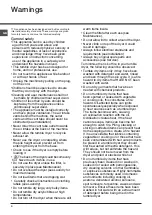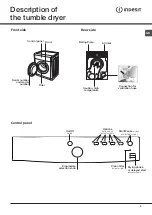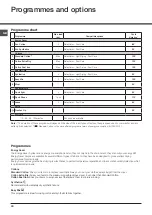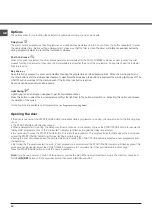
GB
13
Sorting laundry
•
Check the symbols on the care labels of the various
garments to verify whether the garments can be safely
tumble dried.
• Sort laundry according to the type of fabric.
• Empty all pockets and check for loose buttons.
• Close zips and hooks and fasten belts and strings without
tightening them.
• Wring out garments to remove the maximum amount of
water possible.
!
Do not load the dryer when garments are dripping wet.
Maximum load sizes
Do not overload the drum.
The following values indicate the weight of dry garments:
Natural fibres: maximum
kg
Synthetic fibres: maximum
kg
!
Do not overload the dryer as this may result is reduced
drying performance.
Care labels
Always check the care labels, especially when placing
garments in the tumble dryer for the first time. Below are the
most commonly used symbols:
May be tumble dried.
Do not tumble dry.
Tumble dry – high heat.
Tumble dry – low heat.
Drying times
Drying times are approximate and may vary depending on
the following:
• Amount of water retained by items after the spin cycle:
towels and delicate items retain a lot of water.
• Fabrics: items of the same fabric, but with different texture
and thickness may have different drying times.
• Amount of laundry: single items and small loads may take
longer to dry.
• Drying: if items are to be ironed, they can be removed
from the dryer while still slightly damp. Items that require
complete drying can be left longer.
• Heat setting.
• Temperature of the room: the lower the temperature of the
room, the longer it will take for the dryer to dry clothing.
• Bulk: certain bulky items require special care during the
drying process. We suggest removing these items and
replacing them in the dryer once they have been shaken
out: repeat this procedure several times during the course
of the drying cycle.
!
Do not over-dry items.
All fabrics contain natural dampness which helps to keep
them soft and fluffy.
Laundry
7
4


































